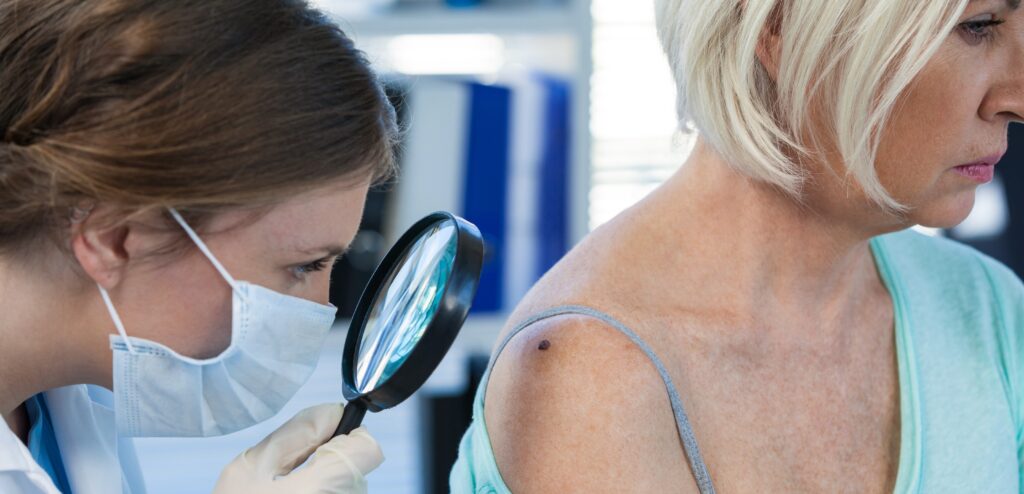Cancer Research UK said how much sunscreen people use and their clothing choices in warmer weather are thought to be linked to where melanoma develops.
It comes as projections suggest that melanoma skin cancer cases will rise again this year to 21,300 cases across the UK, which would be the highest on record.
Two in five melanomas in men are found on the chest, back and abdomen (torso)
Fiona Osgun, head of health information at Cancer Research UK, said: “As the weather gets warmer, it’s really important to look after yourself in the sun.
“Getting sunburnt just once every couple of years can triple your risk of melanoma skin cancer, compared to never being burnt.
“And it’s not just the hot, sunny days you need to watch out for – UV rays can be strong enough to cause skin damage between mid-March and mid-October in the UK, even when it’s cloudy or cool.
“That’s why we encourage people to take some simple steps to stay safe.”
Ms Osgun recommended staying in the shade between 11am and 3pm when the sun is strongest, as well as wearing clothes that help cover up your skin.
, while more than a third in women are found on the legs.
This may be because men are more likely to go without a shirt, while women are more likely to wear shorts or skirts as the weather continues to warm up, the charity said.
It explained that surface area could also be playing a role because men’s torsos are typically bigger than women’s, while women’s legs take up a larger proportion of their body surface area.
Some 87% of melanoma cases – around 17,100 in the UK each year – are caused by over-exposure to ultraviolet (UV) radiation, which comes from the sun and using sunbeds.
“The key is to apply it generously – and remember to top it up regularly, especially if you’re sweating or in water,” she said.
The latest data (from 2018-2021) shows that 40% of melanomas in men were diagnosed on the torso, equivalent to around 3,700 cases every year.
The second most common place is the head and neck (24%), arms and shoulders (20%), and lower limbs, including hips (13%).
In women, the most common location is the lower limbs (from the hips to the feet and including hip), equating to around 3,200 cases every year (35% of all cases).
Arms and shoulders account for 27% of cases, trunk 22%, and head and neck (13%).
Since the early 1990s, melanoma skin cancer incidence rates have increased by two-and-a-half times in the UK.
Rates in females have about doubled, while they have tripled in men.
Skin cancer signs and symptoms
Non-melanoma skin cancer includes 2 main types, basal cell carcinoma (BCC) and squamous cell carcinoma (SCC).
Rarer types of skin cancer include Merkel cell carcinoma, Kaposi’s sarcoma, T cell lymphoma of the skin and Sebaceous gland cancer.
Cancer Research UK says symptoms between different skin cancers can vary but they are “similar to other conditions”.
Common symptoms of skin cancer include a sore or area of skin that:
- Doesn’t heal within 4 weeks
- Looks unusual
- Hurts, is itchy, bleeds, crusts or scabs for more than 4 weeks
Other signs to look out for linked to skin cancer include:
- A sore that doesn’t heal
- Ulcer
- A lump
- Red patches on your skin
- Freckles or moles



